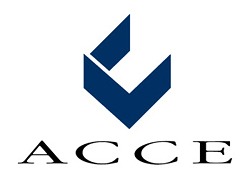
Every Chamber pro has been there—the member who just keeps pushing. They want more visibility than their membership tier allows. They ask for special favors, personal introductions, or free access to paid opportunities. They press for something that feels small in the moment but big in its implications.
Saying yes can backfire, setting a precedent and opening the door to charges of favoritism. Saying no can feel cold and dismissive, risking the relationship. The art lies in navigating that tension gracefully by protecting fairness and your resources while still making the member feel valued.
And we won’t even get into how those “little” asks can turn into very real burnout for you and your staff. When you see their number come up on the phone and you dread answering it each and every time, you know there’s a problem.
Here are some proven strategies you can use when members are pushing past the boundaries of their benefits.
Start by Listening
When a member asks for something unreasonable, the knee-jerk reaction is to say no right away. But sometimes the request is a symptom, not the root. They may be overreacting to an issue they’re concerned about. Maybe they don’t feel like they’re getting enough visibility. Maybe they don’t understand the benefits they already have.
Take the time to listen. Ask questions. Probe into why they want this extra perk. During conversation you might uncover an alternative solution that meets their need without creating an issue. Listening alone can defuse tension as it shows you’re not dismissing them out of hand.
Offer Alternatives Instead of Rejections
Flat rejection can sting. Instead, redirect the energy. If a member asks for something outside the scope of benefits, think about what you can offer. Maybe they want exclusive access? Point them toward sponsorships or higher-tier memberships. Maybe they want a big spotlight? Offer them a speaking opportunity at a luncheon, an article in a member spotlight series, or a chance to host a networking event.
This approach reframes the conversation from “no, you can’t have this” to “yes, here’s what’s available.” The member walks away feeling supported rather than stonewalled.
Structure Special Perks as Paid Services
Sometimes, members really do want more visibility than the standard package. In those cases, creating clear pathways for premium services is key. As Chamber pro Sara Witt Cullen suggested, chambers can offer extras like dedicated email blasts as a fee-based option.
This protects fairness by ensuring everyone has equal access—if they’re willing to invest. It also sends the message that the chamber isn’t shutting members down; it’s simply operating with structure. Plus, it can open valuable non-dues revenue streams.
Change the Way You View the Request
Sometimes we can do what’s asked but it can feel like an imposition, especially if that member is always asking. All you can think of is, “Again, ugh.” In those cases, the solution might just be a pat on your own back. Ask yourself, what does this member’s request say about the chamber? As Marcus Holland from the Greater Centralia Chamber of Commerce recently posted in answer to a member request to post her newsletter, “Good job! The superintendent (member) noticed the VALUE of the chamber’s communication. Send it…It will only build onto your VALUE ADDED SERVICES. If ‘everyone’ notices it and wants you to send theirs, too; then that is a good problem to have. It is $100 for each email. (You just donated a $100 to the school to sell your value.) When you have too many at $100, then raise the price. And if none of that happens, then you just made the superintendent of the school happy. Good job!”
Clarify Audience Alignment
One overlooked tactic is helping members think critically about their audience. A member may assume that chamber communications are the right place for their message, when in fact your audience isn’t a good match for their goals.
By asking, “Who exactly are you trying to reach?” you can often redirect them toward better options such as a targeted sponsorship, a social media takeover, or even resources outside the chamber. This protects your platforms and strengthens your role as a trusted advisor.
Educate Members About Benefits Early and Often
Sometimes overreach happens because members don’t know what’s included. They see opportunities and assume they’re part of the package. By regularly educating members on benefits and showing them how to maximize them, you can cut down on misunderstandings.
Consider hosting quarterly “Maximize Your Membership” sessions or sending periodic “Did you know?” emails that spotlight underused benefits. The clearer the baseline, the easier it is to draw the line when a member asks for something beyond it (or sell them on the higher tier).
Use Consistency as Your Shield
Consistency is your strongest defense against accusations of favoritism. If you make exceptions for one member, word will get out. Others will expect the same treatment, and suddenly what seemed like a small accommodation spirals into a fairness issue or a giant resource drain.
Before granting anything unusual, ask yourself: Would I be comfortable offering this to every member? If the answer is no, you need to either decline or structure it as a paid opportunity. Consistency builds trust and reinforces the value of membership tiers.
Lean on Policy, Not Personality
Difficult conversations can feel personal but framing them around policy helps take the sting out. Instead of “I can’t do that for you,” try “That’s not part of our membership benefits, but here’s what I can offer.”
This shifts the dynamic away from you as the gatekeeper and toward the chamber as a fair system. Policies are less negotiable than personalities, and members often accept boundaries more readily when they see they’re applied across the board.
Maintain Professional Empathy
Even when a request is unreasonable, it usually comes from a place of excitement or eagerness. Members want more visibility, more connections, more value from their investment. Acknowledge that. Thank them for their enthusiasm. Make it clear that you want to help them succeed.
Empathy doesn’t mean giving in—it means showing you understand their perspective. When members feel heard, they’re more likely to accept a “no” without resentment.
Build a “Yes, and…” Culture
Borrowing from improv, consider adopting a “Yes, and…” mindset. That doesn’t mean you always say yes. It means you look for ways to affirm the member’s energy while redirecting it constructively.
Example: “Yes, I love that you’re thinking creatively about visibility, and the way we structure that here is through sponsorships or member spotlights but we have some creative room within those parameters.” This balances validation with boundaries.
Don’t Let One Member Drain the Team
Finally, remember that pushy members can consume outsized amounts of staff time and energy. Protect your team by setting internal limits on how much bandwidth one member gets.
If a situation escalates, loop in leadership or board support. Sometimes hearing a “no” from a broader authority makes it easier for the member to accept. Your job is to serve the whole membership, not just the squeakiest wheel.
Just because someone pays membership dues doesn’t mean they’re entitled to everything. When members ask for too much, it can feel like a tightrope walk. But handled well, these moments can strengthen trust, reinforce fairness, and even uncover new revenue opportunities.
The formula is simple: listen first, redirect with alternatives, structure extras as paid services, and always protect consistency. Approach every situation with empathy and professionalism.
Boundaries don’t weaken member relationships. They protect them. By setting them clearly and kindly, you ensure that every member gets the value they deserve without any one person tipping the balance.

